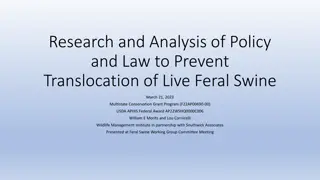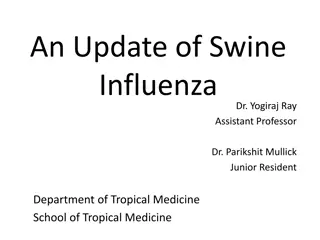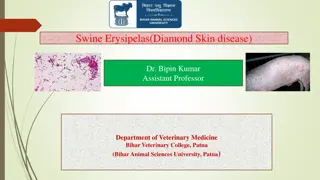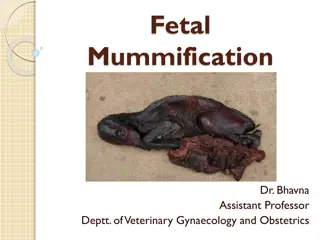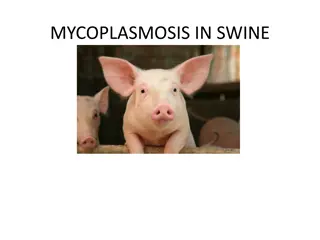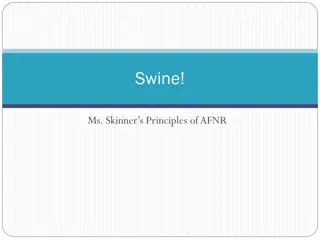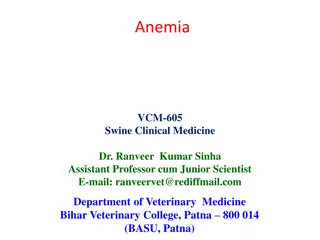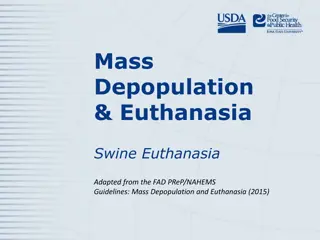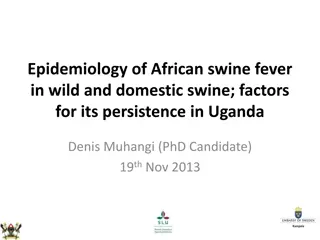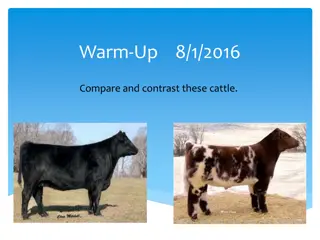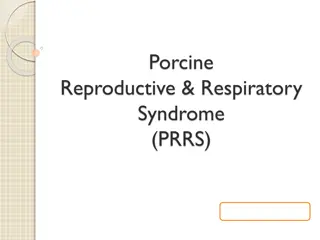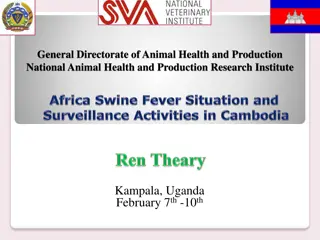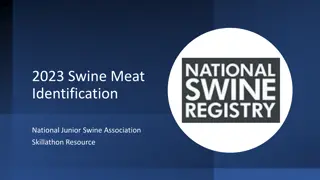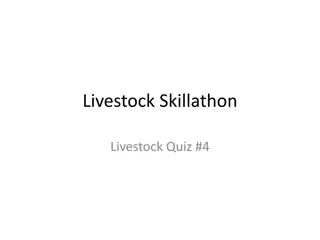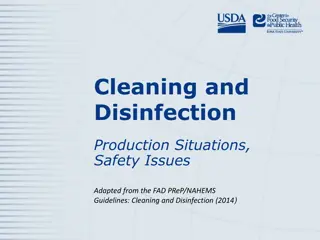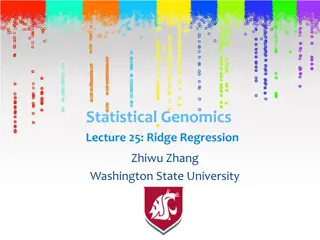Understanding Swine EPDs for Effective Selection
Swine Expected Progeny Differences (EPDs) play a crucial role in selecting breeding stock by predicting various performance traits. This guide covers the definition of EPDs, their significance in selection, and specific EPDs like Number Born Alive, Days to 250 Pounds, and more. Learn about indices like Sow Productivity Index and how to incorporate EPDs into your swine selection strategy.
Download Presentation

Please find below an Image/Link to download the presentation.
The content on the website is provided AS IS for your information and personal use only. It may not be sold, licensed, or shared on other websites without obtaining consent from the author. Download presentation by click this link. If you encounter any issues during the download, it is possible that the publisher has removed the file from their server.
E N D
Presentation Transcript
Swine EPDs and Incorporating them into selection
Objectives Define swine EPDs Learn value of context Discuss using EPDs for selection
Expected Progeny Differences
Swine EPDs What does EPD stand for? Expected Progeny Difference What do they predict? The difference in performance of progeny from one animal compared to animals of different parentage in the same breed How many predictors are there? Numerous, and they cover all stages of production
Swine EPDs Number Born Alive NBA Predicts how many pigs per litter 21 Day Litter Weight LWT Estimates how much the litter will weigh at weaning; factors in milking ability and NBA
Swine EPDs Days to 250 Pounds Days Predicts how many days will be reduced or increased due to genetics for market hogs to reach 250 lbs. Backfat BF Estimation of how much fat thickness will be reduced or increased Pounds of Fat Free Lean LBS) Estimates fat free lean
Indices Sow Productivity Index SPI Reported as the value of an animals dam (it is not theirs) this index combines the lifetime NBA and LWT of the sow; this number must be identical for animals to be littermates Terminal Sire Index TSI Combines the postweaning traits Days, LBS, and BF; is often used to predict terminal value of boars Maternal Line Index MLI Traits from both SPI (NBA and LWT) and TSI (Days, LBS, and BF) into one index; SPI traits are weighted twice as heavily as TSI traits; this number reflects the individual animal s performance in addition to genetic backing
Selection EPDs are a selection tool Must understand the context and marketing strategy They are highly valuable if used in conjunction with visual appraisal When used alone, the results can be disastrous Lose adaptability Genetic defects When visual appraisal is used alone, the results can be disastrous Lose adaptability Genetic defects
Selection When making decisions: Good EPDs + good visual appraisal = Useful animal Poor EPDs + good visual appraisal = Unusable animal Good EPDs + poor visual appraisal = Unusable animal If animals do not offer the genetics and phenotype to be useful in the operation, they should be culled Failure to cull will eventually result in production inefficiencies Animals must be able to survive, so give benefit to visual appraisal over simply numbers




